Student Design Team Goes Postal…
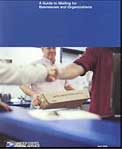
A three-year collaboration between the School of Design and the United States Postal Service offers renewed hope for enemies of instructional manuals. At the National Postal Forum in Nashville, Tenn., March 20-23, representatives of a Carnegie Mellon interdisciplinary design team unveiled the newly redesigned "Domestic Mail Manual," which employs the user-centered design approach championed by the School of Design. The Domestic Mail Manual is the third USPS publication to be redesigned by the Carnegie Mellon team. For more, click here.
Scientists Use MRI To Visualize Gene Expression in Living Animals…

In a first, Carnegie Mellon scientists have "programmed" cells to make their own contrast agents, enabling unprecedented high-resolution, deep-tissue imaging of gene expression. Eric Ahrens, assistant professor of biological sciences in the Mellon College of Science, has developed an approach that uses magnetic resonance imaging (MRI) to monitor gene expression in real-time. Because MRI images deep tissues non-invasively and at high resolution, investigators don't need to sacrifice animals and perform laborious and costly analysis. The results hold considerable promise for conducting preclinical studies in the emerging field of molecular therapeutics and for monitoring the delivery of therapeutic genes in patients. For more, click here.
Adults' Baby Talk Is Nothing To Laugh At…
Adults may feel silly when they talk to babies, but those babies will learn to speak sooner if adults talk to them like infants instead of like other adults, according to a study by Psychology Professor Erik Thiessen. Most adults speak to infants using infant-directed speech: short, simple sentences coupled with higher pitch and exaggerated intonation. Researchers have long known that babies prefer to be spoken to in this manner. But Thiessen's research has revealed that infant-directed speech also helps infants learn words more quickly than normal adult speech. For more, click here.
University Receives Award from Carnegie Corporation…
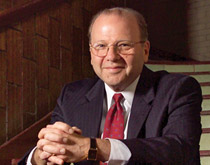
Carnegie Mellon and its president, Jared L. Cohon, are among the winners of the Carnegie Corporation of New York's Academic Leadership Award. The award recognizes leaders of higher education institutions who have demonstrated an abiding commitment to liberal arts and have initiated and supported curricular innovations, including development of interdisciplinary and multidisciplinary programs that aim to bridge the gulf between the theoretical and the practical. Carnegie Mellon was honored for its commitment to interdisciplinary education and ability to integrate academic and co-curricular experiences. President Cohon will receive $500,000 from the Carnegie Corporation to be used for academic priorities on campus. For more, click here.
Voice Performance Major Sings Her Way to Miss Buffalo Crown…

Sophomore Jean Lester has been crowned Miss Buffalo, N.Y. 2005. A voice performance major in the School of Music, Lester sang Puccini's "O mio babbino caro" for the talent portion of the competition. The Orchard Park, N.Y., resident is pursuing courses of study in vocal performance and pre-medicine. She aspires to be either an opera singer or an otolaryngologist (ear, nose and throat specialist). Lester will compete in the Miss New York State Pageant in Watertown, N.Y., on July 2, 2005. The winner of this statewide pageant will advance to compete for the title of Miss America. For more, click here.
Textbooks Shortchanging Students?…

Stories of exciting chemistry discoveries in the news paint a better picture of chemistry than do some widely used high school textbooks, according to a study by researchers at Carnegie Mellon and the University of Pittsburgh. The findings, published in the Journal of Chemical Education, say introductory textbooks could be shortchanging students, omitting content they need to be scientifically literate citizens. Associate Professor of Chemistry David Yaron and his collaborator, Gaea Leinhardt, senior scientist at the University of Pittsburgh’s Learning Research and Development Center, set out to develop online teaching tools for introductory chemistry courses, but found that state content standards didn't mesh with today's concepts and articles in the science press. To remedy this situation, the team is creating scenario-based activities that help students see interesting real-world applications of key concepts and approach chemistry more like practicing scientists.
For more, click here.
Perform Last, Finish First…
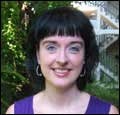
Studies by Wändi Bruine de Bruin, a postdoctoral research associate in the Department of Social and Decision Sciences, have found that participants who appear toward the end of juried competitions do better than those who perform at the beginning. For her latest paper, published in the journal Acta Psychologica, Bruine De Bruin studied European figure-skating competitions and the Eurovision Song Contest, a pop song competition that has taken place in Europe since 1956. She found that participants who appeared near the end of the contests earned higher marks from judges than those who performed earlier. This phenomenon, known as the serial position effect, can also be found in everyday evaluations such as job interviews and student presentations. For more, click here.
Clarke Elected to National Academy of Engineering…

Edmund M. Clarke, FORE Systems Professor of Computer Science, has been elected to the National Academy of Engineering (NAE). Membership in NAE honors people who have made important contributions to engineering theory and practice and who have demonstrated unusual accomplishments in pioneering new and developing fields of technology. Clarke was elected for his contributions to the formal verification of hardware and software correctness. He developed technology, called model checking, that reduces the number of errors in digital circuit designs, a problem that has become more significant than manufacturing difficulties in bringing new computer products to market. For more, click here.
Humphrey Goes to Washington…

Watts S. Humphrey, a fellow of the Software Engineering Institute (SEI), has been awarded the 2003 National Medal of Technology, the highest honor granted by the President of the United States to America's leading innovators. The medal is given to individuals, teams and/or companies for their outstanding contributions to the nation's economic, environmental and social well-being through the development and commercialization of technology products, processes and concepts; technological innovation; and development of the nation's technological expertise. Humphrey developed the basis for the Capability Maturity Model for Software, which has become the standard for assessing and improving software processes worldwide. For more, click here.
NEH Grant Will Propel Humanities Center in the Future…
The National Endowment for the Humanities (NEH) has awarded a $500,000 Challenge Grant to Carnegie Mellon's Humanities Center. The grant will be used to establish an endowment that will fund the center’s work for years to come. Under the terms of the grant, the Humanities Center will receive $500,000 from the NEH contingent on the center raising an additional $1.5 million by 2008. Income from the endowment will fund research fellows who will bring new areas of expertise to humanities students and support the humanities curriculum, interdisciplinary research, and community and campus outreach. For more, click here.
Growing Black Holes Regulate Galaxy Evolution…

Using a new computer model of galaxy formation, researchers have shown that growing black holes release a blast of energy that fundamentally regulates galaxy evolution and black hole growth itself. The model explains for the first time observed phenomena and promises to deliver deeper insights into the understanding of galaxy formation and the role of black holes throughout cosmic history, according to its creators. Published in the Feb. 10 issue of Nature, the results were generated by Carnegie Mellon Astrophysicist Tiziana Di Matteo and her colleagues while at the Max Planck Institut fur Astrophysik in Germany. “In recent years, scientists have begun to appreciate that the total mass of stars in today’s galaxies corresponds directly to the size of a galaxy’s black hole, but until now, no one could account for this observed relationship,” said Di Matteo, associate professor of physics at Carnegie Mellon. “Using our simulations has given us a completely new way to explore this problem.” For more information, click here.
Red Team Eyes $2 Million Grand Challenge Prize…
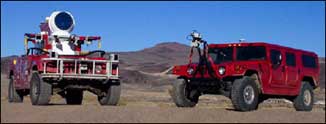
The Red Team has entered two driverless HUMMERS in the Defense Advanced Research Project Agency (DARPA) Grand Challenge, a 175-mile, winner-take-all desert race for robotic vehicles scheduled to take place Oct. 8. The first machine to reach the finish line within 10 hours wins the $2 million prize. To compete, the two HUMMERS, named Sandstorm and H1ghlander, must first succeed in the preliminaries. According to Red Team leader William L. “Red” Whittaker, “failure at any level eliminates a team.” For more, click here.
Supporting a Hydrogen Economy…

Carnegie Mellon, led by Chemical Engineering Professor David Sholl, and the Department of Energy’s National Energy Technology Laboratory (NETL) have developed a new computational modeling tool that could make the production of hydrogen faster and cheaper as the United States seeks to expand its portfolio of alternative energy supplies. The research, reported in the journal Science, predicts hydrogen flux through metal alloy separation membranes that could be used to produce pure hydrogen. For more, click here.
American Psychological Society Honors Robyn Dawes…
The American Psychological Society (APS) will honor Robyn Dawes, the Charles J. Queenan Jr. University Professor of Psychology, with a Festschrift, a collection of essays about Dawes' work written by colleagues from across the nation. This rare honor is being afforded Dawes in honor of a 40-year career during which he has made significant impacts in several areas of psychological science. Dawes is perhaps best known for his research into human cooperation, in which he discovered that people cooperate with one another in situations where rational models predict that it is not in their best interest to do so. For more, click here.
Disclosing Conflicts of Interest Can Harm, Not Help…
Startling new research suggests that disclosing conflicts of interest may actually harm those they are intended to protect. The study, "The Dirt on Coming Clean: Perverse Effects of Disclosing Conflicts of Interest," by Daylian Cain, George Loewenstein and Don Moore, reveals how seemingly ethical behavior—full disclosure of potential conflicts of interest by an advisor (e.g., a realtor, physician, lawyer or stock analyst)—can compromise advisor-client relationships and can harm the client. According to the researchers, disclosure gives those with conflicts of interest a moral license and a strategic incentive to further skew information made public. For more, click here.
Engineering Professor Featured in The Economist…
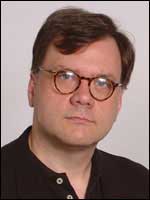
Rob A. Rutenbar, the Jatras Professor of Electrical and Computer Engineering, was featured in the March 2005 edition of The Economist's Technology Quarterly. His team of researchers from Carnegie Mellon and the University of California at Berkeley is working to design a silicon chip architecture targeted at speech recognition. The goal is to do recognition 100 to 1,000 times more efficiently than a conventional computer. The team has received a $1 million grant from the National Science Foundation to develop this chip, which could have applications to homeland security. For more, click here.
Life on Ice…

Nomad, one of Carnegie Mellon's most accomplished robotic rovers, is at it again. This time the rover that trekked 220 kilometers through Chile's Atacama Desert and explored Antarctica for meteorites is being groomed for a potential return to the frozen continent to search for signs of living microorganisms near the top of its icy surface. Carnegie Mellon robotics researchers recently deployed Nomad on the frozen surface of Lake Mascoma in Hanover, N.H., which they say simulates the icy terrain of the Antarctic plateau. The deployment was part of the LORAX Project (Life on Ice, Robotic Antarctic Explorer), which seeks to measure the distribution of surviving microorganisms in the near-surface ice on the Antarctic plateau. For more, click here.
Finding Life in the Desert…
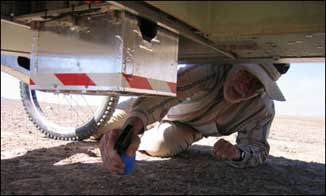
A system being developed by Carnegie Mellon scientists could one day search for life on Mars. At the 36th Lunar and Planetary Science Conference in March, Biological Sciences Professor Alan Waggoner presented the results of his life detection system's recent performance in Chile's Atacama Desert, where it found growing lichens and bacterial colonies. This marks the first time a rover-based automated technology has been used to identify life in this harsh region, which serves as a test bed for technology that could be deployed in future Mars missions. The "Life in the Atacama" 2004 field season—from August to mid-October—was the second phase of a three-year program whose goal is to understand how life can be detected by a rover that is being controlled by a remote science team. For more, click here.
Environmental Experts Appear on The Lehrer News Hour on PBS
Environmental experts Lester Lave, Deborah Lange and Volker Hartkopf appeared in a two-part series on The Lehrer News Hour that focused on the rising cost of oil. Lave, the Harry B. and James H. Higgins University Professor of Economics and co-director of the Carnegie Mellon Electricity Industry Center, said the biggest loser due to the rising oil prices is really OPEC, because skyrocketing oil prices induced recessions and depressions and “when the immediate effects were over, prices dropped down below average and OPEC was then worse off for having done that.” Lange, executive director of the Steinbrenner Institute for Environmental Education and Research, spoke about how oil prices have been the “catalyst for increased investments into environmentally friendly solutions.” She noted Carnegie Mellon’s use of alternative fuel vehicles and the university’s purchase of wind energy. Hartkopf, professor of architecture and director of the Center for Building Performance, discussed the environmentally friendly and energy-efficient Intelligent Workplace atop Margaret Morrison Carnegie Hall. Watch excerpts of the broadcast here.



